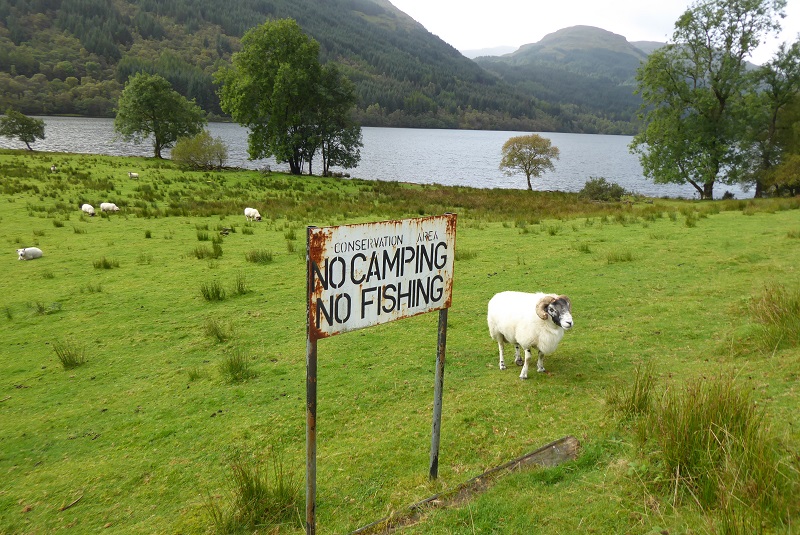
Our two National Park Authorities, along with Scotland’s 32 local authorities, are Access Authorities. Among other statutory duties under the Land Reform (Scotland) Act these are supposed to protect access rights and set up Local Access Forum (LAF)s to advise them about the exercise of those rights. This post looks at how the LLTNPA have been failing to do that at Loch Voil.
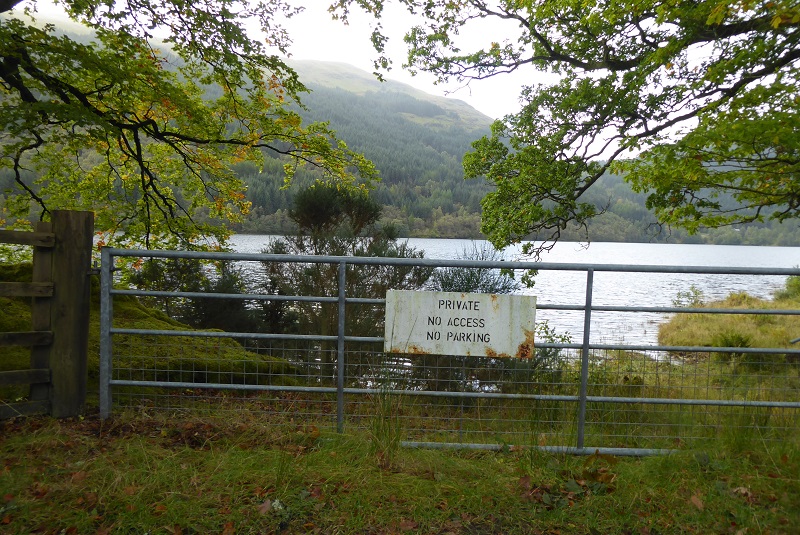
The LLTNPA, its Local Access Forum and the unlawful access signs at Loch Voil
The Loch Lomond and Trossachs National Park Authority (LLTNPA) failed to hold a single meeting of their LAF in 2021, despite all the access problems resulting from the Covid pandemic. There were four meeting dates for the LAF scheduled in the previous year but the only one for which papers are available took place in February 2020 and appears to have been the only meeting held that year.
By comparison, while the Cairngorms National Park Authority LAF did not meet in 2020, it held four meetings in 2021 and the National Access Forum (NAF) held no less than five meetings, two jointly with LAFs from across Scotland. It is an interesting fact that the NAF, which met so regularly, is convened by Don Milton from the British Horse Society who is also chair of the LLTNPA LAF which never met at all!
The LLTNPA also failed to call a single meeting of their LAF during the consultation on the camping byelaws and their subsequent approval and has a long record of failing to advertise its meetings (see here). It was not until September I became aware that the LLTNPA LAF had met in April (see here). There was no agenda for the meeting or papers on the website so I sent an email to Kenny Auld, previous head of the access team and now Head of Visitor Services. This, like any email I now send to the LLTNPA, was diverted to infomailbox@lochlomond-trossachs.org so it could be vetted by their senior management and I received an immediate out of office reply. But that email was forwarded to Kenny Auld because I got an apologetic response from him and both the agenda and the Access Team Update Paper were soon afterwards uploaded to the website.
I thanked Kenny and asked him for some further information but so far I have had no response (see here for emails). While it was clear from the report to the LAF that the Access Team were doing some good work, what also caught my eye was what the report said about access problems in Balquhidder:
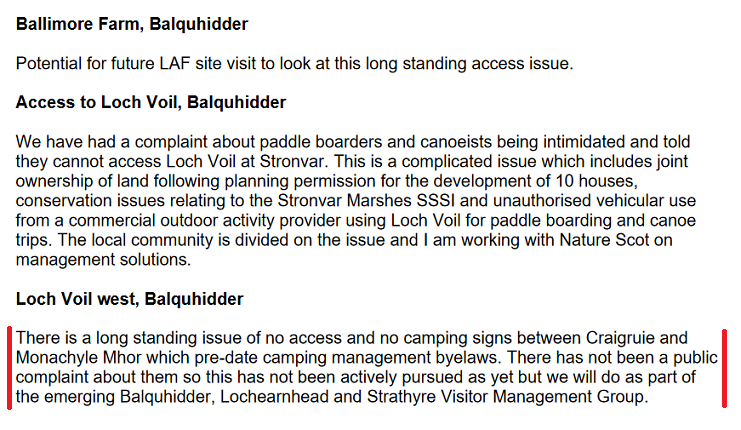
I covered the obstructions to access at Ballimore, which I reported to the LLTNPA, two years ago when writing about the hydro scheme there (see here). Perhaps, if the LAF not been suspended for two years, more progress might have been made resolving this particular problem?
I was also familiar with the unlawful signs along Loch Voil but had held back from reporting these or blogging about them because I wanted to see if the LLTNPA would do anything about what I regarded as a blatant affront to access rights. It was clear from the Update Paper that the LLTNPA was very unlikely to address the issues unless a member of the public complained. Hence I revisited Loch Voil to check on the latest position and then on 7th October tried to report the signs to the LLTNPA Access Team. After receiving the out of office reply from infomailbox@lomond-trossachs.org I received a nice email from another dept saying I would receive a reply the following week. Two weeks later I have received nothing further.
The LLTNPA – a failed access authority
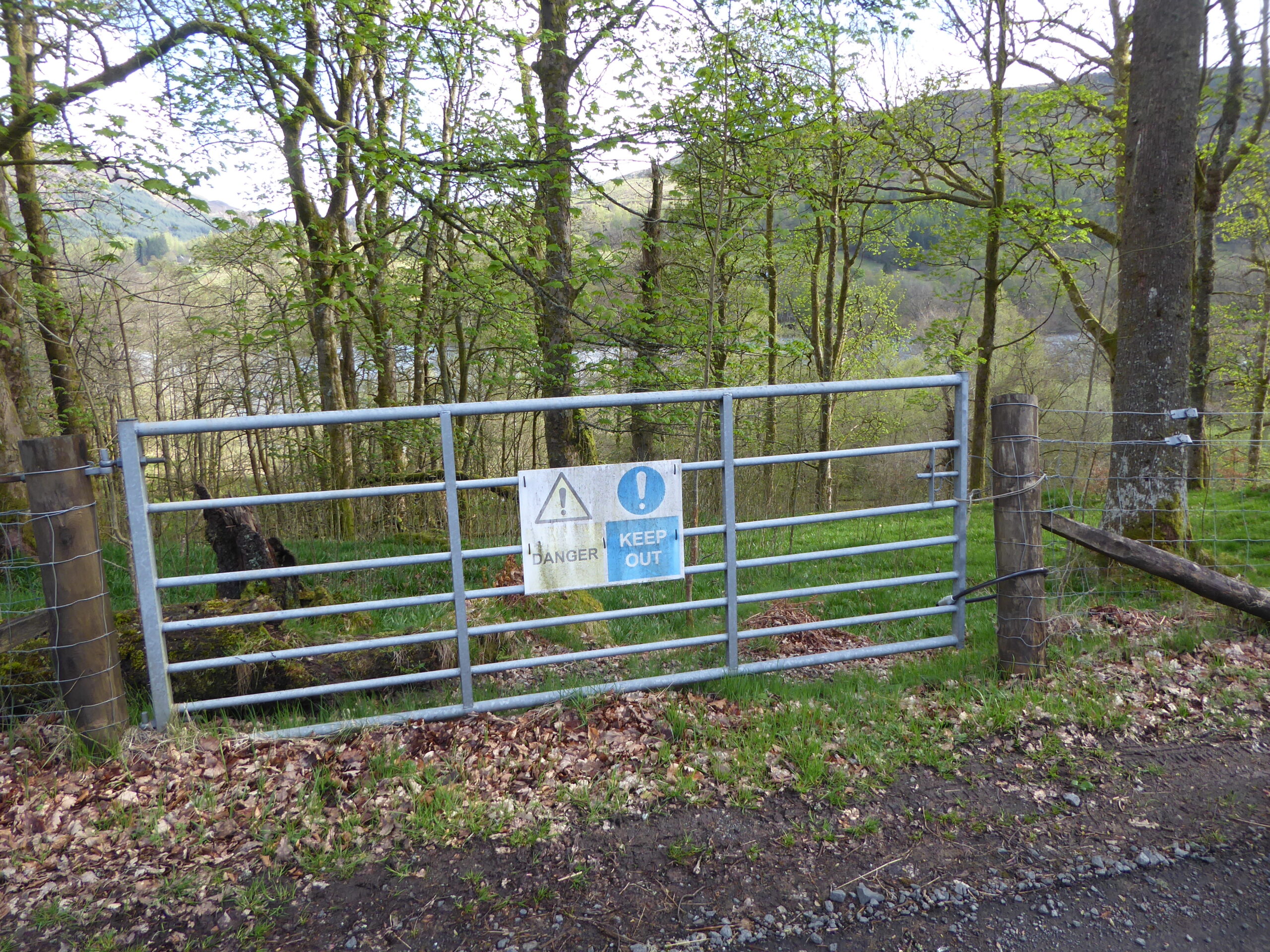
Section 13 of the Land Reform (Scotland) Act 2003 is titled “Duty of local authority to uphold access rights” and reads as follows:
“(1) It is the duty of the local authority to assert, protect and keep open and free from obstruction or encroachment any route, waterway or other means by which access rights may reasonably be exercised.”
That duty does NOT require a statutory Access Authority to wait until they receive a complaint from the public before they take action. Access Team staff have clearly been aware of these signs and obstructions but have chosen – or perhaps more likely have been instructed – to take no action.
Section 14 of the Land Reform (Scotland) Act 2003 (see here) gives Access Authorities the power to issue formal notices where landowners take certain actions designed to deter people from exercising their access rights, including signs as those featured here. The LLTNPA, therefore, has had the means to remove the signs but has chosen not to use them.
If any Access Authority in Scotland should have been addressing these issues it should have been the LLTNPA which, under the National Parks Act, has an additional statutory aim:
“to promote understanding and enjoyment (including enjoyment in the form of recreation) of the special qualities of the area by the public”.
The Land Reform Act and the history of access problems on Loch Voil
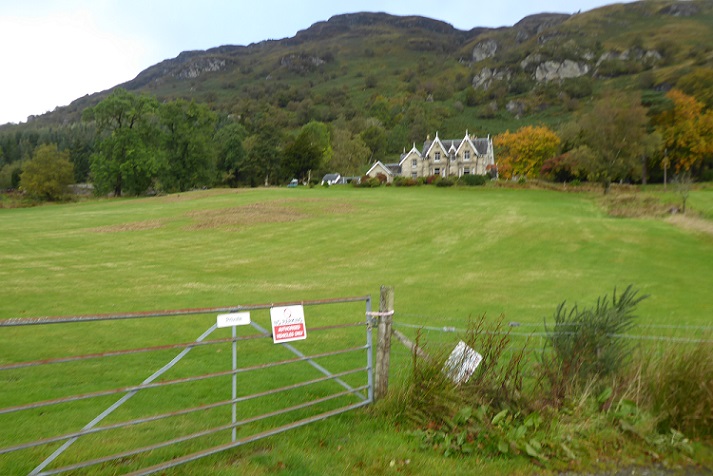
Attempts by landowners on the north shore of Loch Voil to prevent and hinder public access were one of the reasons why the Scottish Parliament decided to enshrine traditional freedoms to take access in law as access rights. There was a very interesting article in the Sunday Herald in 2001 (see here) about how the golfer Sandy Lyle had bought a house, a farm and 2.5 miles of the north shore of Loch Voil and erected private signs all round the property.
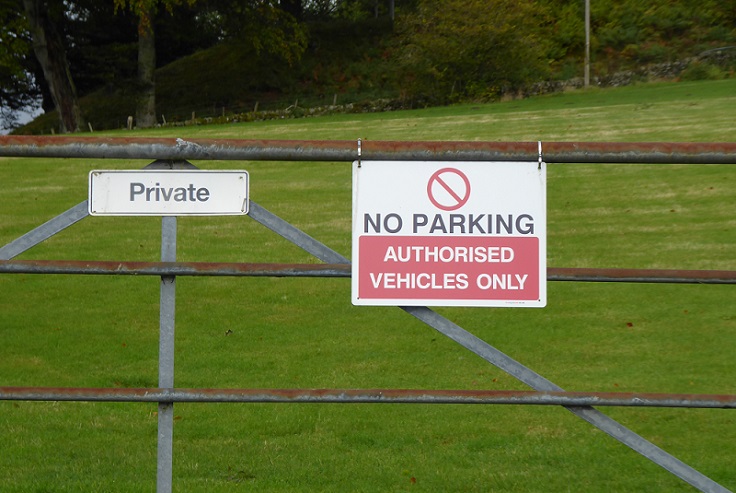
Richard Barron from Stirling Council (now head of Scotways) explained in the article how Stirling Council at the time did not have the power to compel landowners to remove such signs. However, from 2003 the recently formed LLTNPA, as one of the new Access Authorities, was given the necessary powers. For 19 years since then the LLTNPA has done nothing to use those powers and many of the signs, whether now Sandy Lyle’s responsibility or not, are still there!
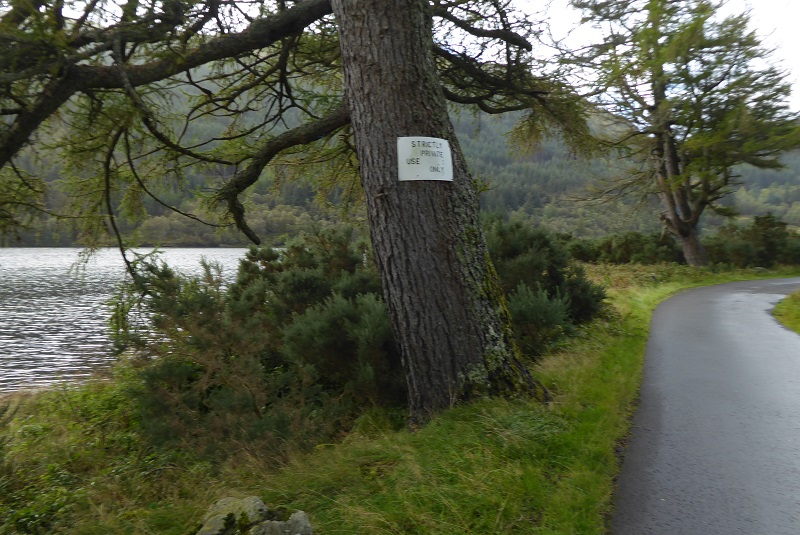
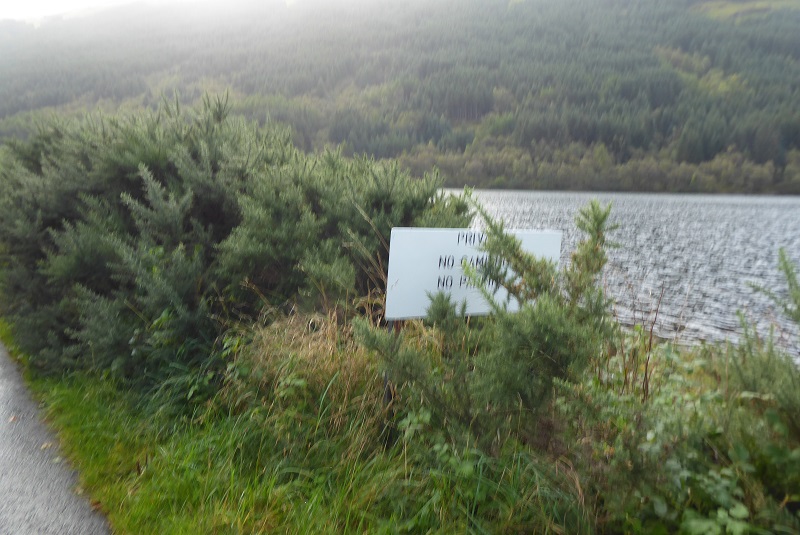
While it is difficult to ascertain the extent of the property, at one time at least owned by Sandy Lyle, it is clear that he/the new owners were not the only landowners trying to stop access along the north shore of Loch Voil.
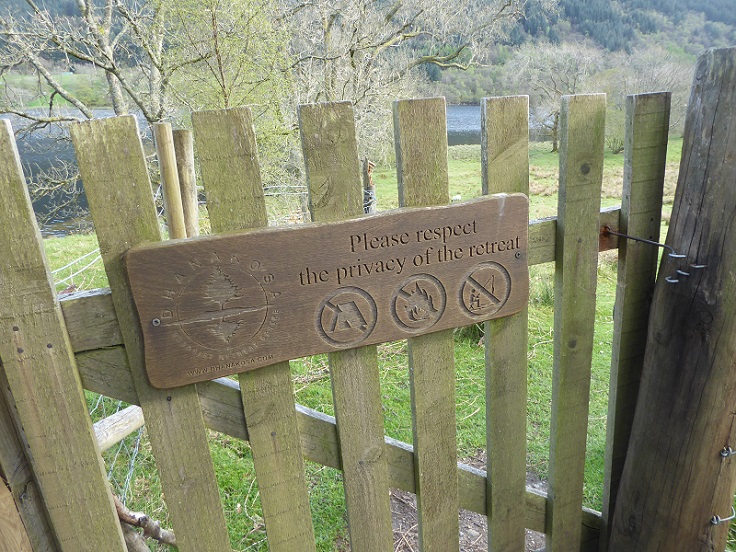
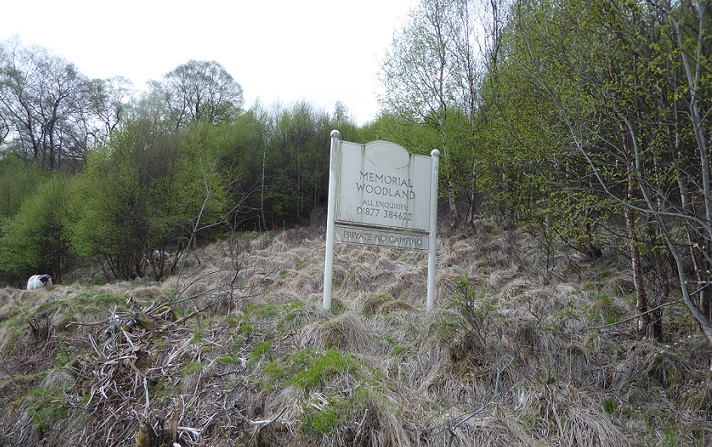
Unsurprisingly, given this history of inaction on the part of the LLTNPA, some enterprising members of the public have taken the law into their own hands, either doctoring the unlawful signs:
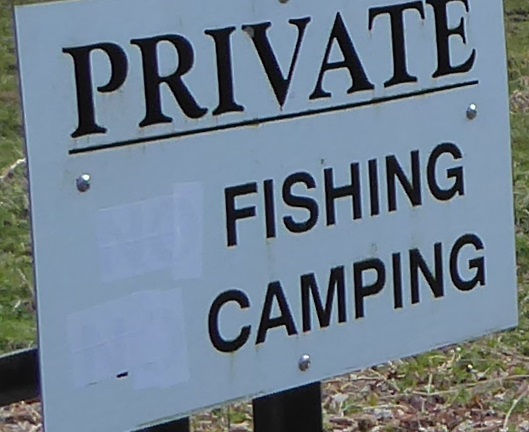
Or in some cases trying to remove them:
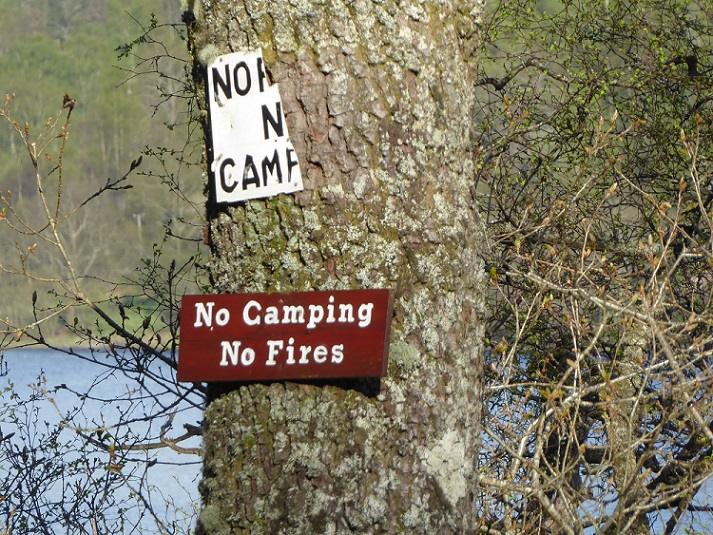
The camping byelaws and Loch Voil
Instead of tackling the landowners failure to respect access rights, ten years later the LLTNPA decided to support them by creating camping byelaws which would make camping without a permit outside of specified places within camping management zones an offence:
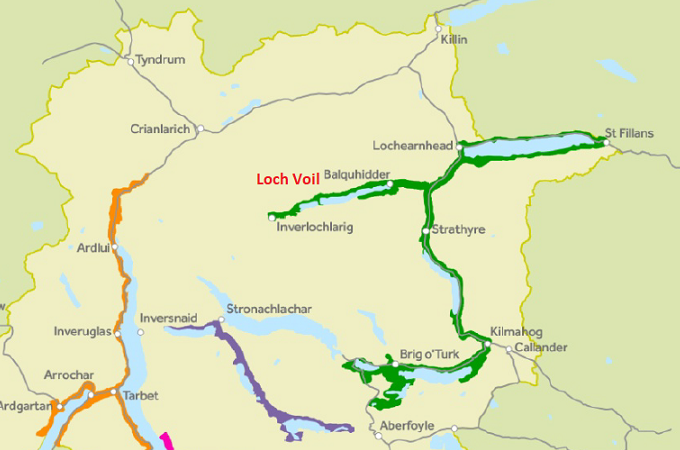
Effectively the LLTNPA decided to reward landowners for their unlawful behaviour. In return they obtained consent to use one small area of the loch shore as a permit area:

In the Board Paper that resulted in the approval of the camping byelaws the LLTNPA claimed “the proposed Management Zones will continue to be freely accessible to the public”. That was never the case on the north shore of Loch Voil and still isn’t because of the locked gates and signage.

Moreover, the permit area they created with the landowners’ permission had only very space for camping, officially 8 tents but in practice far less than that.
Belowis the description which I downloaded from the LLTNPA website in 2020 (but had disappeared when I checked today):
“Permit areas don’t have set pitches; you choose where you want to camp within the area. This permit area has a maximum of 8 spaces available. The terrain you can choose from varies along the shore, in some places there is a grassy slope or bank, in others there is grass and pebble beach. There are trees and boulders along much of the shoreline so some areas are best suited to smaller 1-4 person tents. The pebbles on the beach are deep in places so long tent pegs may be helpful.”
How helpful! When they first introduced permit areas the LLTNPA promised to increase the number of places people could camp in due course and because of that bodies like Stirling Council supported the introduction of the camping byelaws:

There are areas along the north shore of Loch Voil that are far more suitable for camping than the existing permit area and could be used to promote public enjoyment of the area but these remain littered with no camping signs, whether official under the byelaws or unlawful:

The problems along Loch Voil do not just affect campers, however, on account of the fencing along much of these loch shore there is almost nowhere for campervans to stop or pull off the road.
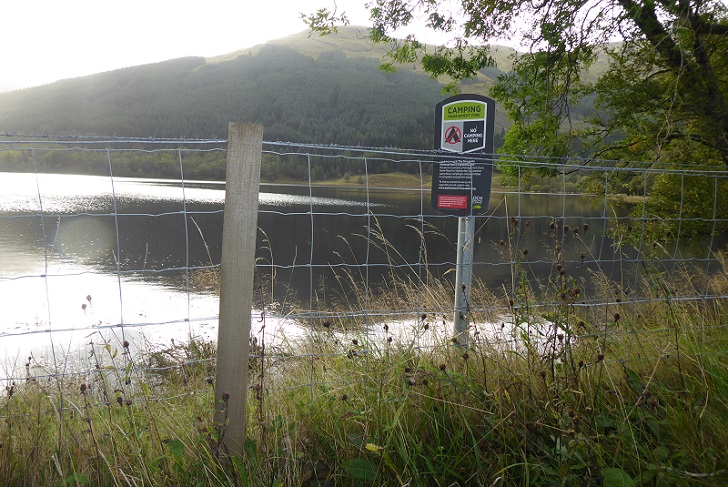
The LLTNPA paper on the camping byelaws claimed that:
“central to the Your Park proposals is to promote access and a higher quality and safer visitor experience”
That is complete guff when it comes to Loch Voil. It is not just the LLTNPA’s access team that has failed here. The LLTNPA’s Ranger Service patrols the loch on an almost daily basis during the camping byelaw season looking for unlawful campers but it too has donenothing to address these problems and improve the visitor experience. Much of that is not difficult: after visiting Loch Voil in 2018 I wrote a post on the forestry signs there (see here) and was quickly contacted by Tilhill Forestry who removed the offending signs. So why hadn’t the LLTNPA done this?
What needs to happen
The LLTNPA’s failure to address access problems or to provide appropriate infrastructure for visitors at Loch Voil cannot be understood as a failure of the frontline staff involved, however frustrating attempts to communicate with them may be. Responsibility for the lack of communication and failure to address concerns goes to the very top, the Chief Executive Gordon Watson, while the LLTNPA Board has looked the other way.
Have none of the Board Members who actually live in Scotland ever visited Loch Voil and noticed the signs, the locked gates, the barbed wire and the inadequate facilities?
The Minister responsible for National Parks, the Green MSP Lorna Slater, should now set up an independent taskforce of people committed to access rights to investigate why the LLTNPA have been failing to fulfil their statutory duties and make recommendations of what needs to change. At the very least they should be required to set upa fully functioning Local Access Forum alongside staff who are clearly told their job is to uphold access rights and proactively address access problems. If the LLTNPA refuse to do that, it is surely time to transfer responsibility for upholding access rights back to local authorities.

I have often wondered how these signs along Loch Voil have been allowed to remain. Maybe we now have the answer in the Access Team report: “There has not been a public complaint about them so this has not been actively pursued as yet…”. Is that really the way the National Park works – overlook infringements of the legislation until someone complains? Reactive, not proactive? Someone from the NP must surely have been down this road in the last 19 years, but presumably just turned a blind eye.
But what an intriguing thought about the grounds of Sandy Lyle’s house. Not a private garden but a golf course over which we could have access rights!
There is little point in transferring responsibility for access rights in the area back to local authorities many of whom are no better at enforcing them. A good clue is to try to find any reference to access officers on various council websites, although the presence of an Access page is no guarantee that there is any point in reporting a violation.
The only thing that would work would be a statutory mechanism whereby an access authority was legally compelled to respond to a report of an access violation within a set period stating what action they intended to take, with strong provision for protecting the identity of the complainant(s) who probably live close to or even on property belonging to the offending landowner who has a great deal of “clout” locally. There would have to be a simple mechanism to “refer upwards” a failure to act to an overall body with suitable powers.
This is very unlikely to happen as it appears that the Scottish Government views the access legislation as a mistake to be quietly forgotten.
I see that the review of the Loch Lomond Byelaws which has just completed public consultation includes a proposal to extend licencing from vessels to their skippers, so loch sailors can expect to be intercepted and boarded by uniformed Rangers demanding to see your papers. (Not me as I won’t be going back.)
Hi Niall, I take you first point though IF the access team resource at the NP was transferred to local authorities and protected I do wonder if they would be able to take a more proactive role over access than they do now – it would depend of course on the local authority. Nick
There is absolutely nothing stopping LLTNP from addressing these issues. The simple fact is that they are not interested, and are more interested in the continued privatisation of access rights, using their control to deter wild campers in favour of those who will pay through the nose.
It is much wider than just LLTNP. It was not long after the access law was introduced that the courts established the principle that the richer you are the more “privacy” (i.e. private land) you are entitled to, quite against the intent of the legislation which excluded only “the curtilage of a dwelling”.
Under the cover of the invidious lockdowns and travel restrictions various people and bodies moved to restrict access in a number of ways direct and indirect. Just one example: You now cannot take any vehicle deemed to be a “campervan” to the Scottish Islands on a Calmac ferry unless you can show proof of campsite bookings for the duration of your stay. In order to make this possible, you can’t take such a vehicle on an island ferry at all without pre booking. This is an incredible imposition of state control over people’s lives which the campervan haters will absolutely love in the mistaken belief that it doesn’t set a precedent that can and will inevitably be extended to affect them. “Your application for permission to travel is refused as the designated capacity for the activity you wish to carry out has been reached for the current period.”
Had a horrible experience with a landowner at far west end of Loch Voil this summer as we were taking a canoe down to the water – very alarming behaviour, including aggressively driving a tractor towards us to block our access – it ended up in the hands of the police.
Niall – can you provide link to the above CalMac rules? I don’t think that is true. They have stopped vans using standby queues, but no rules that I can see re: needing to show campsite booking.
Neil, if you try and book a ferry to Colonsay on Calmac this is the message you get before you can proceed with the booking: “Please note that caravans and motorhomes may be allowed on Colonsay but only by contacting Colonsay Community Council direct. We are therefore unable to offer online bookings for caravans and motorhomes for this route.” Nick
How on earth does a Community Council have the power to do this? I don’t know about Colonsay but the ones around here aren’t even elected as nobody cares because they do nothing useful. (Mainly what they do is object to any and all planning applications on spurious grounds which are rightly disregarded.)
It certainly existed this summer. Interesting that all mention appears to have been scrubbed from the internet. Maybe they have quietly dropped it for the winter but it will no doubt be back next year. Why else would only campers not be allowed to turn up and go? – the reasoning on their website makes no sense; it’s supposedly because of the space taken up but car size campers are included in the ban and campers are not allowed even if they are the only ones in the queue and the ferry is nowhere near full.